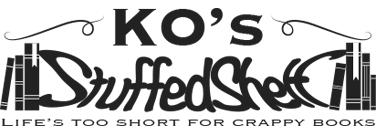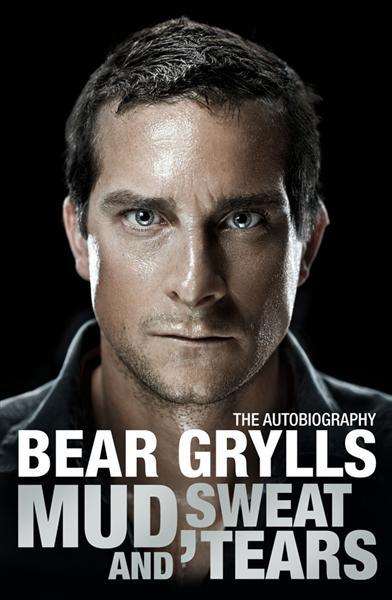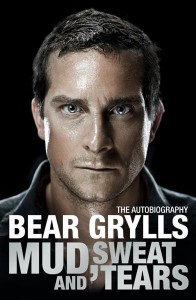Morning Everyone!
I was doing a little web-surfing this morning and ran across something I found pretty interesting and thought that I would share it with all of you. Bear Grylls (host of Man vs Wild – which I LOVE) has written a memoir titled “Mud, Sweat, and Tears,” and in this memoir he talks about how he coped with bullying as a child. I have two small children, and bullying (unfortunately) was a problem for one of them a few years ago. I did NOT no how to handle it, neither did my husband. We were angry, we were sad for our son and at a total loss. If I would have been smart, I would have asked for help, or at the very least advice, so when I saw this book my first thought was: “This is what I needed.” So I wanted to share it with all of you. Just in case one day you find yourself at an impasse you don’t know how to handle it. Happy Reading!
Mud, Sweat, and Tears: The Autobiography
by Bear Grylls
Bear Grylls has always sought the ultimate in adventure. Growing up on a remote island off of Britain’s windswept coast, he was taught by his father to sail and climb at an early age. Inevitably, it wasn’t long before the young explorer was sneaking out to lead all-night climbing expeditions.
As a teenager at Eton College, Bear found his identity and purpose through both mountaineering and martial arts. These passions led him into the foothills of the mighty Himalayas and to a karate grandmaster’s remote training camp in Japan, an experience that soon helped him earn a second-degree black belt. Returning home, he embarked upon the notoriously grueling selection course for the British Special Forces to join the elite Special Air Service unit 21 SAS—a journey that would push him to the very limits of physical and mental endurance.
Then, disaster. Bear broke his back in three places in a horrific free-fall parachuting accident in Africa. It was touch and go whether he would walk again, according to doctors. However, only eighteen months later, a twenty three-year-old Bear became one of the youngest climbers to scale Mount Everest, the world’s highest summit. But these were just the beginning of his many extraordinary adventures. . . .
Known and admired by millions as the star of Man vs. Wild, Bear Grylls has survived where few would dare to go. Now, for the first time, Bear tells the story of his action-packed life. Gripping, moving, and wildly exhilarating, Mud, Sweat, and Tears is a must-read for adrenaline junkies and armchair explorers alike.
The following is an excerpt from “Mud, Sweat and Tears: The Autobiography,” in which television survival man Bear Grylls divulges just how he earned such stellar mountaineering chops. But before he could lecture Discovery Channel viewers on dehydration and shark attacks on his show “Man Vs. Wild,” he had to overcome predators of his own: school bullies. In this chapter of his memoir, Bear explains how learning karate gave him confidence.
The Excerpt
“I signed up as soon as I could for the karate and aikido clubs, and found that I loved the martial arts way—the focus, the camaraderie, and above all the acquiring of an art that requires the use of guile over power, technique over force.
And I stuck with it. That was the real key to getting good at martial arts: time and motivation—and I certainly had the motivation, thanks to the foghorn.A few of my friends also signed up with me, and came along to the early classes. In actual fact they were invariably much better than me when we started—often stronger, fitter, and more flexible—but after a few weeks they all began to drop out.
It was hard sometimes on a Sunday evening, when everyone else was messing around playing table tennis or watching TV, to drag yourself out into the winter’s darkness and head off to get battered for two hours in the gym by some maniacal martial arts teacher.But I kept going and kept going, and I guess I did a bit of a Forrest Gump on it: I just stuck at it—and I am so pleased I did.
One summer I got the chance to tour as part of the Karate Union of Great Britain (KUGB) team to Japan. It was a dream come true.I remember being dropped off at the bus station in London by my mother, and nervously waving her good-bye. I was neatly dressed in a blazer and tie, with my karate team badge neatly sewn in place on my lapel.
The bus was filled with the rest of the karate squad, gathered from all over the UK—none of whom I had met before.
I could instantly see that they were all bigger, tougher, and louder than me—and I was pretty scared. Japan felt a frighteningly long way away.I took a deep breath and sat down in the bus, feeling very small and insignificant.
The team was an eclectic mix of karate experts—from London taxi drivers to full-time professional fighters. (The only other Etonian who had been selected as part of the team was Rory Stewart, the MP who went on to become known for his epic walk through Afghanistan, as well as governing a province of occupied Iraq age only thirty.) This is going to be an interesting trip, I thought.
But I had nothing to fear.
The squad completely took me under their wing as their most junior member, and arriving in Tokyo as a fresh-faced teenager, away from home, was eye-opening for me.
We headed up to the mountains outside of Tokyo and settled into the training camp.
Here we began to study and train under Sensei Yahara, one of the most revered karate grandmasters in the world. Each night we slept on the floor in small wooden Japanese huts, and by day we learned how to fight—real and hard.
The training was more exacting and demanding than anything I had previously encountered. If our positions or stances weren’t pinpoint accurate, we would receive a firm crack from the bamboo “jo” cane.
We quickly learned not to be lazy in our stances, even when tired.
In the early evenings when we finished training I would walk the two miles down the mountain to a small roadside hut and buy milk bread, a form of sweet milk cake, and I would slowly eat it on my way back to the camp
.
Then I would bathe in the natural hot volcanic springs and soak my tired muscles. And I loved it all.On our return to Tokyo, en route back to the UK, we got to witness a private training session of the top twenty karate fighters in the world. It was intense to watch. Fast, brutal at times, yet like poetry in motion.
I was even more hooked than I had been before.
One day I would be that good, I vowed.
I will never forget the day I finally got awarded my black belt, and the pride I felt.
The day of the grading had taken three years to arrive, and for those three years I had given it my all: training at least four or five times a week, religiously.
The final examination came and my mother came down to watch it. She hated watching me fight. (Unlike my school friends, who took a weird pleasure in the fights—and more and more so as I got better.)
But Mum had a bad habit.
Instead of standing on the balcony overlooking the gymnasium where the martial arts grading and fights took place, she would lie down on the ground—among everyone else vying to get a good view.
Now don’t ask me why. She will say it is because she couldn’t bear to watch me get hurt. But I could never figure out why she just couldn’t stay outside if that was her reasoning.
I have, though, learned that there is never much logic to my wonderful mother, but at heart there is great love and concern, and that has always shone through with Mum.
Anyway, it was the big day. I had performed all the routines and katas and it was now time for the kumite, or fighting part of the black-belt grading.
The European grandmaster Sensei Enoeda had come down to adjudicate. I was both excited and terrified—again.
The fight started.
My opponent (a rugby ace from a nearby college), and I traded punches, blocks, and kicks, but there was no real breakthrough.
Suddenly I found myself being backed into a corner, and out of instinct (or desperation), I dropped low, spun around, and caught my opponent square round the head with a spinning back fist.
Down he went.
Now this was not good news for me.
It was bad form and showed a lack of control.
On top of that, you simply weren’t meant to deck your opponent.
The idea was to win with the use of semicontact strikes, delivered with speed and technique that hit but didn’t injure your opponent.
So I winced, apologized, and then helped the guy up.
I then looked over to Sensei Enoeda, expecting a disapproving scowl, but instead was met with a look of delight. The sort of look that a kid gives when handed an unexpected present.
I guess that the fighter in him loved it, and on that note I passed and was given my black belt.
I had never felt so proud as I did finally wearing that belt after having crawled my way up the rungs of yellow, green, orange, purple, brown—you name it—colored belts.
I had done this on my own and the hard way; you can’t buy your way to a black belt.
I remember being told by our instructor that martial arts is not about the belts, it is about the spirit; and I agree . . . but I still couldn’t help sleeping with my black belt on that first night.
Oh, and the bullying stopped.”
The foregoing is excerpted from Mud, Sweat and Tears: The Autobiography by Bear Grylls. All rights reserved.







